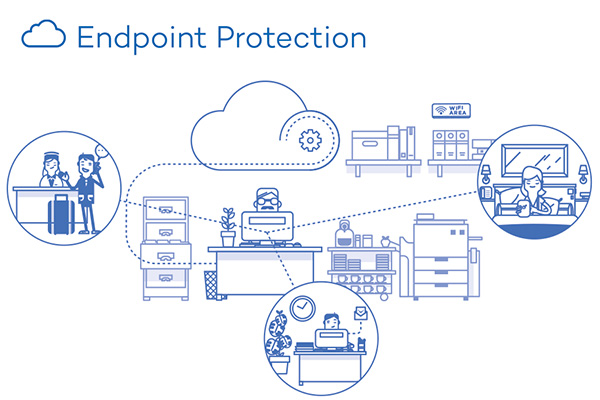What Is Endpoint Protection? How to Choose and Implement It
What Is Endpoint Protection? Are There Any Special Considerations When Choosing and Implementing It?
NSV will explain everything below to help individuals and businesses gain more cybersecurity knowledge. In today’s Industry 4.0 era, information security is a pressing issue as systems are constantly targeted by malicious actors. Without proper security knowledge, it becomes extremely difficult to defend against attacks.
What Is Endpoint Protection?
Endpoint protection refers to solutions designed to secure endpoints—devices such as computers, laptops, mobile phones, or any equipment that connects to a network. It is often associated with the term endpoint security, which encompasses measures that protect endpoint devices from exploitation, attacks, and unintended data leaks caused by human error.

Endpoint Protection provides centrally managed security solutions designed to protect endpoints such as servers, workstations, and mobile devices used to connect to the enterprise network.
If you only rely on traditional antivirus software, it is impossible to stop targeted attacks and APT attacks (Advanced Persistent Threats). Endpoint protection does not simply block malware attacks—it can also safeguard data through disk and file encryption, prevent data loss, and even control devices to ensure the most comprehensive endpoint protection possible. This is why it has become an essential security solution for businesses.
How to Choose an Endpoint Protection Solution
Depending on whether the user is an individual or a business, endpoint protection solutions vary. However, at their core, they generally include essentials such as firewalls, antivirus tools, internet security tools, mobile device management tools, encryption, intrusion detection tools, and mobile security solutions.
For individuals, endpoint protection typically does not include centralized administration. Meanwhile, businesses absolutely require centralized management. Enterprise servers organize configurations efficiently or install endpoint security software on individual devices. Performance logs and security alerts are then sent to a central management server for analysis and evaluation of security vulnerabilities and common weaknesses.
Comparison: Individual vs. Enterprise Endpoint Protection
| Enterprise | Individual |
|---|---|
| Better at managing many and diverse types of endpoints | Manages only a small number of user endpoints |
| Centralized management capabilities | Endpoints are set up and configured individually |
| Remote administration capabilities | Rarely supports remote management |
| Configure endpoint protection on remote devices | Configure endpoint protection directly on each device |
| Deploy patches to all relevant endpoints | Users update each device manually |
| Requires permission for modifications | Uses local user admin rights |
| Ability to monitor devices, employee activity, and behavior | Activities and behaviors are limited to a single user |
Recommended Endpoint Protection Solutions from NSV
- Palo Alto Networks Traps
- Symantec Endpoint Protection
- Trend Micro Endpoint Security with Apex One
- McAfee Endpoint Protection
- ESET Endpoint Protection
Deployment Methods
Installation methods differ depending on the vendor. Providers will give customers detailed installation guidance when they choose their solutions.
Endpoint Protection vs. Antivirus Software
| Endpoint Protection | Antivirus Software |
|---|---|
| Protects only a single endpoint and provides visibility only into that endpoint | Provides a full view across the enterprise network and visibility into all connected endpoints from a central point |
| Depends on manual updates by users or scheduled updates | Provides interconnected security that shifts security administration responsibilities to the enterprise IT or cybersecurity team |
| Uses signature-based detection, so failure to update or encountering a zero-day attack leaves systems vulnerable | Automatically updated via cloud-based intelligence; technologies like behavioral analysis can detect previously unknown threats based on suspicious activity |








